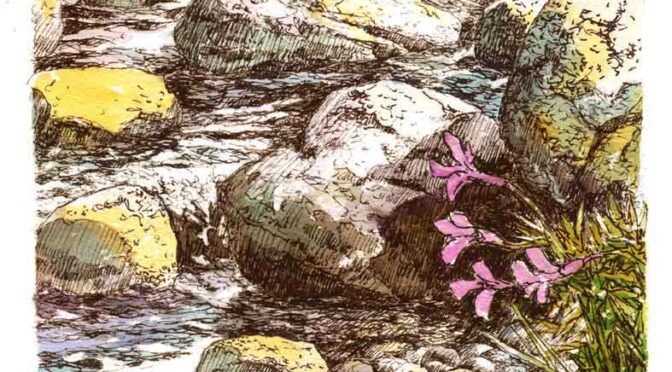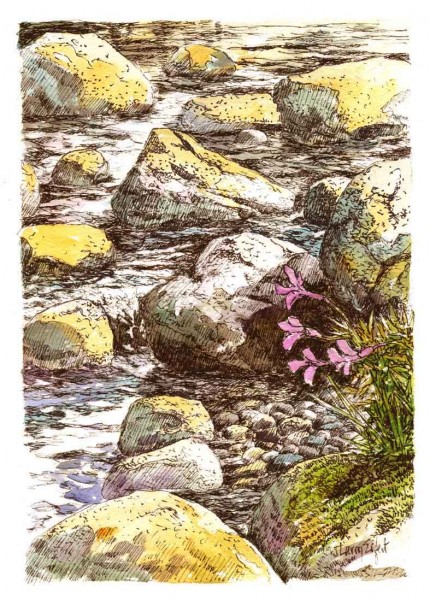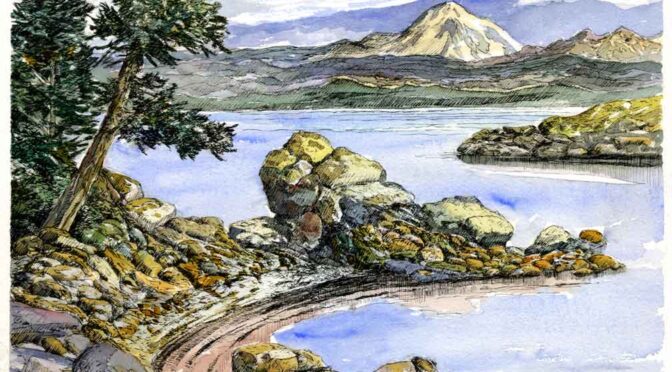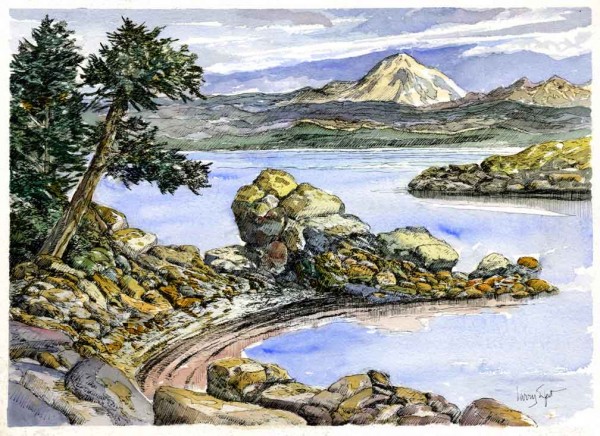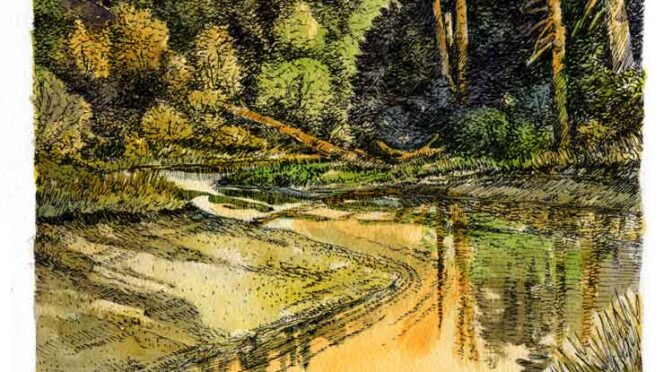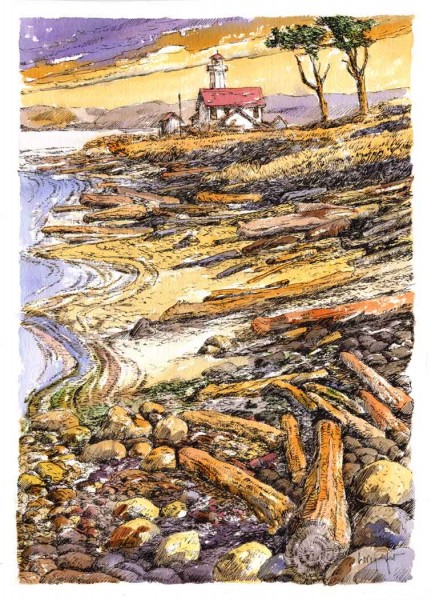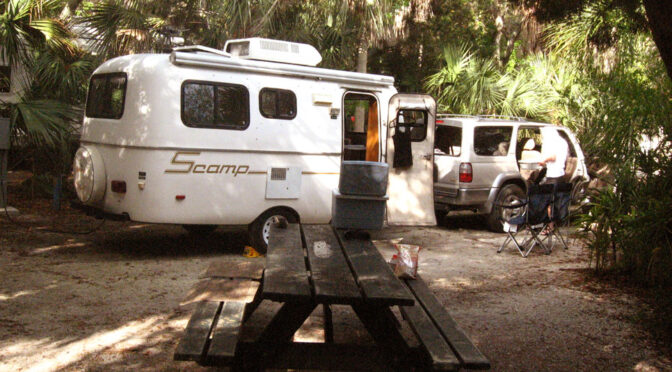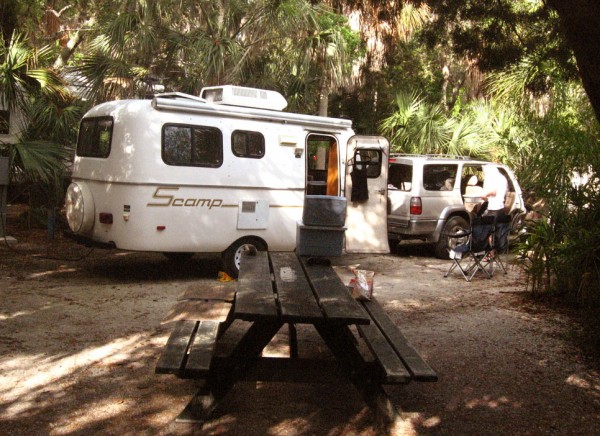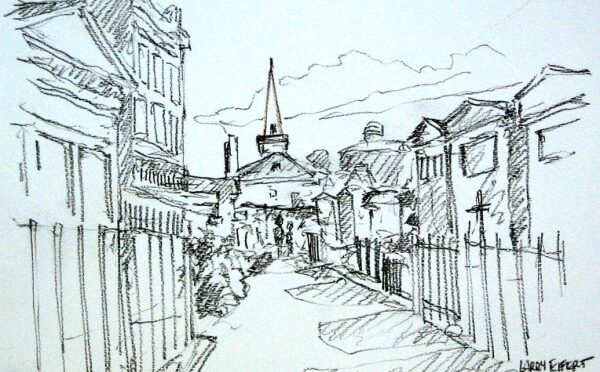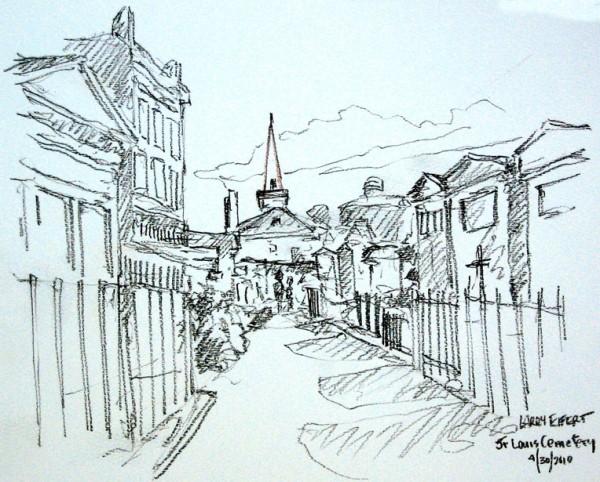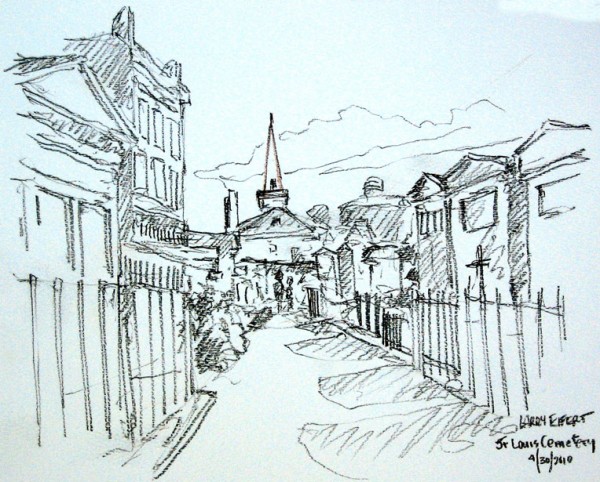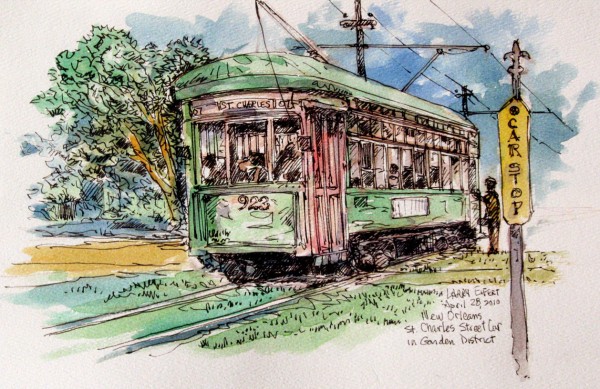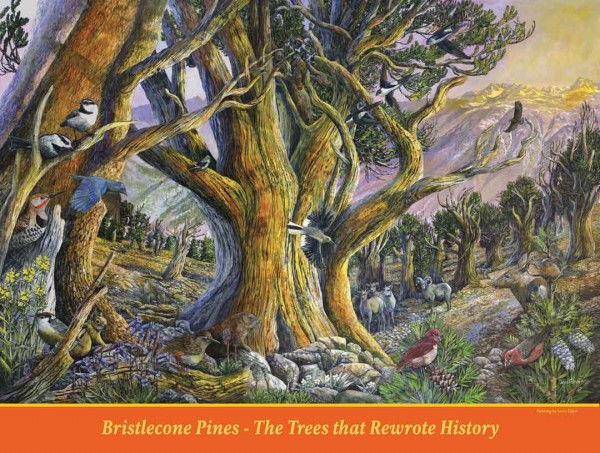
Bristlecone Pines – The Trees That Rewrote History
NEW jigsaw puzzle
I was commissioned for this new mural by the Crater Lake Institute, a most forward-thinking and generous bunch. This painting is one I’ve wanted to do for years, and now, with the mural complete, we’ve also created a puzzle of the image.
If you don’t know, and many people don’t, bristlecone pines are high elevation mountaintop trees of the Great Basin in remote areas of Nevada, eastern California and Utah. I think they’re the most beautiful trees on the planet, and the starkness of their high-elevation surroundings just adds to their appeal. We’ve studied them in Bryce Canyon and Great Basin National Parks, and the famous Schulman Grove in the White Mountains east of Bishop, CA on Forest Service lands. In all these places, we’ve felt a reverence, an almost religious experience in even casually walking among these ancient trees. How ancient? Well, some still-living trees have been dated to having begun their living journey from a small seed almost 5000 years ago, making them the oldest single plant species on the entire planet. Branches and downed trees have been dated to almost twice that age, and have helped scientists better understand climate data since the Ice Age. That’s what the title, “The Trees that Rewrote History” refers to. With few wildfires and a high-desert arid climate , downed bristlecone wood stays around. To put this into a perspective we can maybe grasp better, these trees began life when there were woolly mammoths walking around North America!
Now, I just have to add this extra bit because it’s eaten at me for decades, and made educating people about bristlecones with my art a mission for me. This is a direct quote from Wikipedia: “In the Snake Range of eastern Nevada Donald R. Currey, a student of the University of North Carolina, was taking core samples of bristlecones in 1964. He discovered that “Prometheus” in a cirque below Wheeler Peak (in what is now Great Basin National Park) was over 4,000 years old. His coring tool broke, so the U.S. Forest service granted permission to cut down “Prometheus”. 4,844 rings were counted on a cross-section of the tree, making “Prometheus” at least 4,844 years old, the oldest non-clonal living thing known to man. … He never cut down another tree in his life.”
Enough said: you guys understand, and I think some of you might have actually known Mr. Currey, who died in 2004. It’s a sad tale, is it not? Why is it that we keep repeating needless destruction of this little planet? Well, I think it’s because we simply don’t appreciate something until it’s gone or screwed up beyond repair. Like Prometheus – or the Gulf wetlands we were in only six weeks ago.
So, my bristlecone image is now a 500-piece jigsaw puzzle (made of recycled materials, I might add) with a good interpretive essay on the box’s back along with a species key. You can buy it online or by email or call us at 1-888-437-2218 and we’ll ship it with an invoice. We’re trying to make it easier for readers who have difficulty with the web ordering-thing. If you’d like to bundle up several puzzles, it saves you shipping. Just tell us what you want.
Thanks for reading this week. This one meant a lot to me to finally see it in print – and it’s already selling – and educating – at some of the bristlecone parks.
Larry Eifert
Click here to go to the online blog this was to.
Click here to go to our main website – packed with jigsaw puzzles, prints, interpretive portfolios and lots of other stuff.
Click here to check out what Nancy’s currently working on with her photography.
